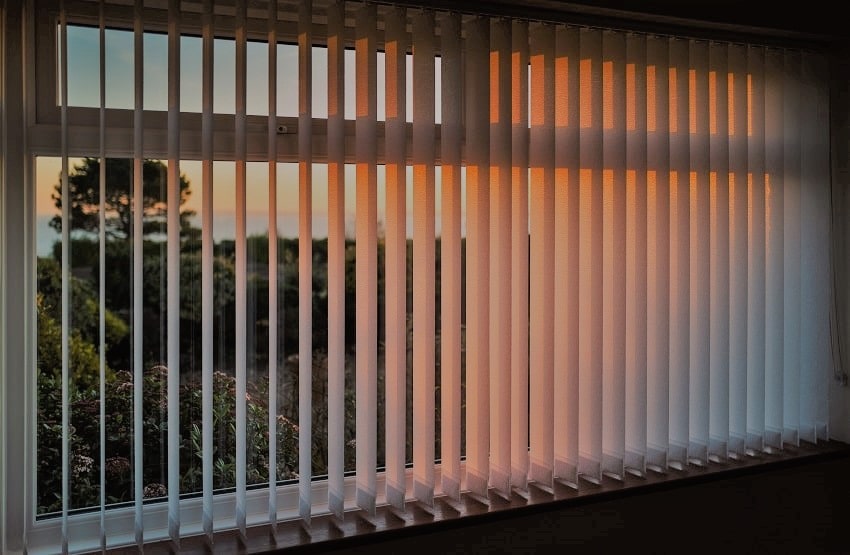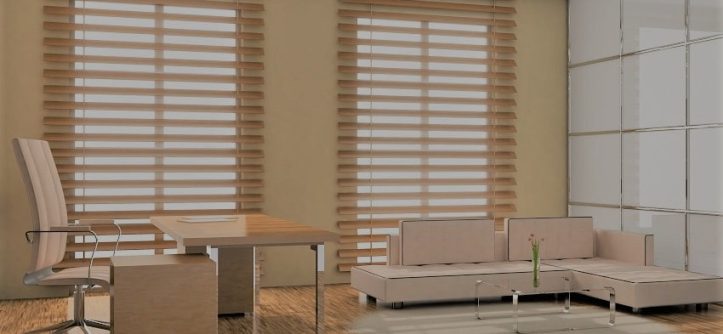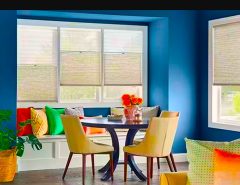If you want the convenience of having full control of your privacy and the amount of sunlight that goes inside your property, blinds are an excellent choice for a window treatment. However, choosing between horizontal and vertical blinds can be a difficult decision. In this article, these two types of blinds will be discussed, as well as the recommendations on when to use either one.
Why choose vertical blinds over horizontal blinds
- Easy maintenance
Unlike horizontal blinds, dust doesn’t settle on vertical blinds. Since the slats are vertical, there’s no room or surface where dirt and dust can settle and accumulate. Aside from cleanliness, vertical blinds are easy to maintain. Horizontal blinds can be a pain when it comes to cleaning, especially if you get their lines tangled up when cleaning them.
To maintain a vertical blind, all you need to do is clean the headrail, spray some silicone on the tracking mechanism, wipe the excess silicone, and finish off with soapy water. With horizontal blinds, you need to go do extra steps. (3)

- Easy maintenance
If you don’t want to get your blinds repaired or replaced often, consider getting vertical blinds. Horizontal blinds have a lot of design problems, like the following:
- Their cords can easily snap because it often holds a lot of tension whenever you adjust the height and shade of your blinds.
- Their rollers, where the cord and lines go through, can easily get stuck because of many reasons.
- If you accidentally folded or snapped a slat while installing your blinds, it’s difficult to replace it. With vertical ones, you can just get the leftmost or rightmost slat and replace the damaged one with it.
Another disadvantage of horizontal blinds is that it makes a room feel crampy, especially if the blinds are completely closed. With a vertical blind, it will feel like the room and window area is still spacious.
- Perfect for cold regions
If you live in a cold region or where the sun doesn’t shine that much, vertical blinds are a great option. They don’t completely block out the sun, but they can still give you the privacy you need. Also, when you leave them fully open, they can let as much sunlight as they can as if the windows are open.
Plus, if you have eastward- or westward-facing windows, you can opt for vertical blinds. They can block enough light to prevent sunrise and sunset from lighting and heating your home or building too much. Of course, if the sunlight in your area or region is so intense, you can consider horizontal blinds instead.
- Good for large windows
Vertical blinds are great for large windows or double-sided doors. Vertical blinds can be made in bigger sizes since the way the slats are positioned and installed are much better than horizontal blinds. This is why vertical blinds are sturdier than horizontal blinds.
Why choose horizontal over vertical blinds
If you want to maximize all these benefits, you should make sure that you have the right window ideal for horizontal blinds. First, know that horizontal blinds are great for windows that move, close, or open upwards and downwards. Moreover, horizontal blinds are great for small and narrow windows—mainly because most horizontal blinds are generally designed to be smaller than vertical ones.
- Protection against the sun
If you live in a sunny area, you would want blinds that can totally shield you from the sun. Note that sunlight has a power density of approximately 1.3965kW/m2 ±0.087kW/m2. This means it has the potential to heat a one square meter window to the point where you can fry an egg. (1)
With horizontal blinds, you have greater control when it comes to the sunlight that can go into your room. You can also minimize the amount of heat sunlight can generate inside your property. Between horizontal and vertical blinds, if you want to experience total darkness and maximum aversion to sunlight, the former is the right pick.
- Provides better privacy
Moreover, if you want no one taking a peek inside your home or office, horizontal blinds are the one for you. Each slat is tightly packed together when they’re closed, totally hiding your room from people outside.
- If your windows are facing northwards or southwards
In addition, horizontal blinds are a great pick if your windows are facing northwards or southwards. Windows facing those directions will be hit by the sun through an awkward angle, which vertical blinds can’t easily block.
However, it’s not great of a concern if overhangs protect your windows, you have a south-facing window, you’re located in the southern hemisphere, or you have a north-facing window and located in the northern hemisphere. (2)
- Does not block your furniture
Another thing that you should consider when choosing between horizontal and vertical blinds is if windows with furniture or decorative items below them. Unlike vertical blinds, the height of horizontal blinds can be adjusted. So, if there’s something right below the window that you wouldn’t want to be obscured by your blinds, you can just adjust the height of your horizontal blinds.
Overall, if you want to find the right blinds for your taste that offer more functionality, you can opt to get horizontal blinds. Some of them come with better heat resistance, noise-cancellation, and improved insulation. Vertical blinds also come with room-darkening and heat-reflective features, but they’re limited.
Conclusion
Depending on your situation and the type of windows you have, you have to carefully choose what blinds to install––either vertical or horizontal blinds. Hopefully, this short article served as a good guide and helped you decide which one to get for your property.
References
- “Power Density of Solar Radiation”, Source: https://hypertextbook.com/facts/1998/ManicaPiputbundit.shtml
- “Window Orientation And Shading”, Source: http://www.fsec.ucf.edu/en/consumer/buildings/homes/windows/shading.htm
- “How to Lubricate Vertical Blinds”, Source: https://homeguides.sfgate.com/lubricate-vertical-blinds-20292.html




